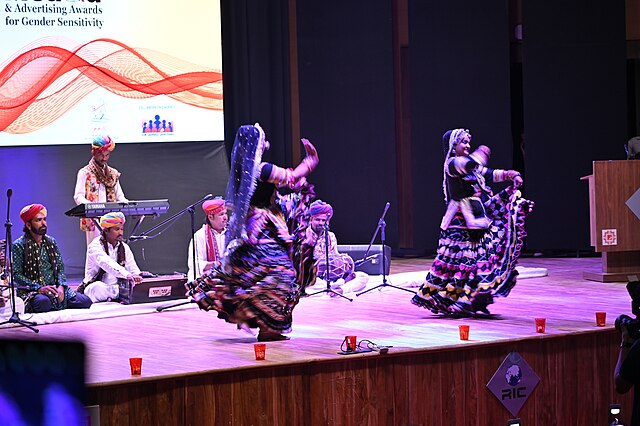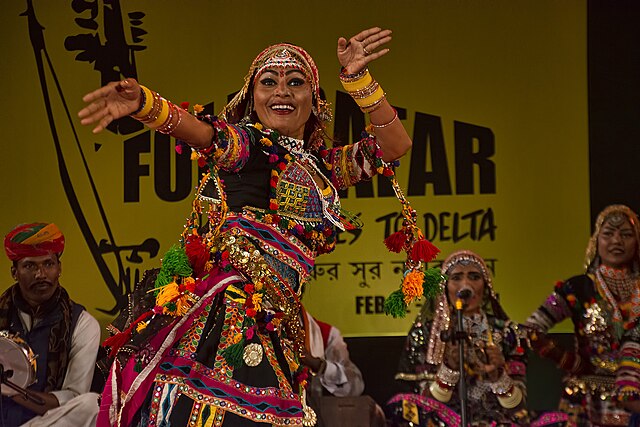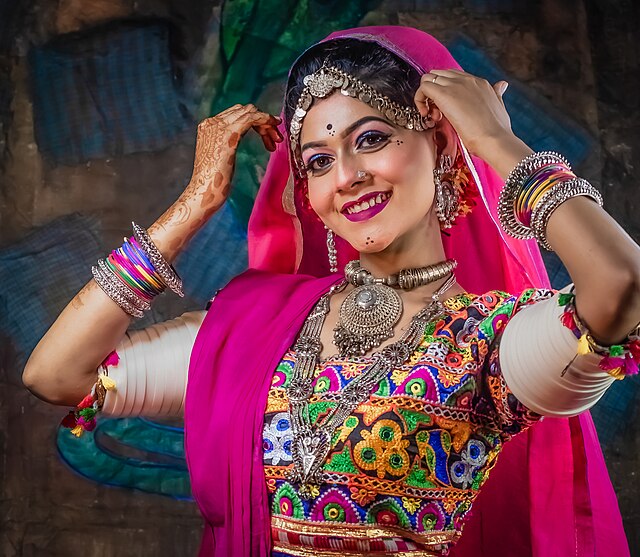Have you ever wondered what makes Rajasthani culture so enchanting that it captures hearts across the globe? The answer lies in its spectacular folk dances that have been mesmerizing audiences for centuries. From the graceful twirls of Ghoomar to the hypnotic movements of Kalbelia, Rajasthani folk dance represents one of India’s most vibrant cultural treasures.
These aren’t just dance forms – they’re living stories that breathe life into the golden sands of the Thar Desert. Each performance is like opening a time capsule that reveals tales of royal courts, desert caravans, and the indomitable spirit of Rajasthani people. Whether you’re a culture enthusiast, a travel blogger, or someone who simply appreciates artistic beauty, understanding these dance forms will give you a deeper appreciation of India’s rich heritage.
What Makes Rajasthani Folk Dance So Captivating?
The magic of Rajasthani folk dance lies in its perfect blend of storytelling, spirituality, and celebration. Unlike many other dance forms that require years of formal training, these folk traditions emerged organically from the daily lives of Rajasthani communities. They represent real emotions, real celebrations, and real connections to the divine.
The Rich Cultural Heritage Behind Every Movement
Every gesture in Rajasthani folk dance carries meaning. When a dancer spins her colorful ghagra (traditional skirt), she’s not just creating visual beauty – she’s recreating the circular motion of life itself. The hand movements often mimic daily activities like drawing water from wells, harvesting crops, or welcoming guests, transforming mundane tasks into artistic expressions.
These dances served multiple purposes in traditional Rajasthani society. They were entertainment during festivals, a form of worship in temples, and even a way to pass down historical events from one generation to the next. Think of them as living libraries where culture is preserved through movement rather than words.
Vibrant Costumes That Tell Stories
The costumes in Rajasthani folk dance are like wearable art galleries. Each color choice, fabric selection, and ornament placement follows centuries-old traditions. The bright reds symbolize fertility and celebration, while yellows represent the golden mustard fields of Rajasthan. The mirror work (shisha) embedded in the fabrics isn’t just decorative – it was believed to ward off evil spirits and bring good luck.
Women’s costumes typically feature the ghagra-choli combination with an odhni (veil), while men wear dhotis, kurtas, and colorful turbans. The jewelry isn’t merely ornamental; pieces like the nath (nose ring) and chooda (bangles) indicate marital status and regional identity.
Most Popular Rajasthani Folk Dances You Must Experience

Let’s dive into the most celebrated dance forms that have put Rajasthan on the global cultural map. Each of these dances offers a unique window into different aspects of Rajasthani life and philosophy.
Ghoomar: The Crown Jewel of Rajasthan
If Rajasthan had to choose one dance to represent its soul, it would undoubtedly be Ghoomar. This graceful dance form originated in the royal courts and has become synonymous with Rajasthani culture worldwide. The name “Ghoomar” comes from the Hindi word “ghoomna,” meaning to spin or revolve.
Origins and Cultural Significance
Ghoomar traces its origins to the Bhil tribe, but it was refined and popularized in the royal courts of Mewar. Traditionally performed by women during auspicious occasions like weddings, festivals, and the arrival of guests, Ghoomar represents joy, celebration, and feminine grace.
The dance is performed in a circular formation, with dancers moving in clockwise directions while spinning their voluminous skirts. The continuous spinning is believed to induce a trance-like state that connects the performer with the divine. It’s like a moving meditation that celebrates both earthly joy and spiritual transcendence.
Traditional Costume and Music
The Ghoomar costume is a visual feast. Women wear ankle-length ghagras in vibrant colors like pink, red, and orange, paired with fitted cholis (blouses) and flowing odhnis. The outfits are heavily adorned with gota work, mirror embellishments, and intricate embroidery that sparkles as the dancers spin.
The musical accompaniment includes traditional instruments like the dhol, tabla, harmonium, and manjira. The songs often narrate tales of Rajput valor, romantic legends, or praise for local deities. The rhythm starts slowly and gradually builds up, encouraging the dancers to spin faster and create an almost hypnotic visual spectacle.
Kalbelia: The Mesmerizing Snake Charmer Dance
Kalbelia is perhaps the most internationally recognized Rajasthani folk dance, thanks to its sensual movements and captivating performance style. Performed by the Kalbelia community, traditionally known as snake charmers, this dance mimics the fluid movements of serpents.
The dance is characterized by its incredible flexibility and grace. Performers bend backward to touch the ground with their heads while maintaining perfect balance – a skill that requires years of practice. The black, flowing costumes decorated with silver embroidery create mesmerizing patterns as dancers move, resembling the sinuous movement of snakes.
UNESCO Recognition and Global Appeal
In 2010, Kalbelia folk songs and dances were inscribed on UNESCO’s Representative List of the Intangible Cultural Heritage of Humanity. This recognition brought global attention to the art form and helped preserve it for future generations.
The international appeal of Kalbelia lies in its universal language of movement. You don’t need to understand Hindi or Rajasthani to appreciate the storytelling through dance. The performances often include fire dancing and acrobatic elements that leave audiences spellbound regardless of their cultural background.
Bhavai: The Death-Defying Balancing Act
Bhavai is not just a dance – it’s a testament to human balance, concentration, and artistic skill. Performers, typically women, dance while balancing multiple pots or other objects on their heads. Some variations include dancing on the rim of a glass, on a tightrope, or even on sword edges.
Skills Required and Training Process
Mastering Bhavai requires extraordinary physical conditioning and mental focus. Dancers begin training in childhood, starting with simple balancing exercises and gradually progressing to more complex performances. The training involves developing core strength, improving proprioception, and learning to maintain composure under pressure.
The dance represents the Rajasthani philosophy of finding beauty and celebration even in challenging circumstances. Just as the people of Rajasthan have thrived in the harsh desert environment, Bhavai dancers create art while overcoming seemingly impossible physical challenges.
Regional Variations Across Rajasthan

Rajasthan’s diverse geography and history have given birth to distinct regional dance styles, each reflecting the local culture and traditions of different areas.
Marwar Region Folk Dances
The Marwar region, centered around Jodhpur, is known for its warrior traditions and desert landscape. The folk dances here often reflect themes of courage, romance, and desert life. The Gair dance, performed during Holi celebrations, involves men dancing in circles while wielding sticks in synchronized patterns.
The Kachchhi Ghodi dance, literally meaning “dummy horse dance,” features performers wearing elaborate horse costumes and enacting mock battles and wedding processions. This dance form celebrates the region’s martial heritage and the importance of horses in Rajasthani culture.
Mewar Region Traditional Performances
The Mewar region, with Udaipur as its cultural center, has a more refined and royal flavor to its folk dances. This is where Ghoomar reached its most sophisticated form. The region also gave birth to Gangaur dance, performed during the festival dedicated to Goddess Gauri, and the Gavri dance drama, which combines dance with theatrical storytelling.
Hadoti Region Dance Forms
The Hadoti plateau region has its unique dance traditions influenced by its proximity to Madhya Pradesh. The Geendad dance is performed by men wearing colorful clothes and bells around their ankles. The Indoni dance, performed by women during the monsoon season, celebrates the arrival of rains in this relatively greener part of Rajasthan.
Traditional Costumes and Accessories
The costumes in Rajasthani folk dance are integral to the performance, serving both aesthetic and functional purposes. They’re designed to enhance the visual impact of movements while maintaining cultural authenticity.
Women’s Attire in Rajasthani Dance
Ghagra Choli Significance
The ghagra (full-length skirt) is the centerpiece of women’s dance costumes. These skirts can measure up to 12-15 meters in circumference, creating spectacular visual effects when the dancer spins. The fabric choice varies from cotton for daily wear to silk and georgette for special performances.
The choli (fitted blouse) is designed to provide comfort during vigorous dance movements while maintaining modesty. Traditional cholis feature intricate embroidery, mirror work, and sometimes small bells that create rhythmic sounds during dancing.
Jewelry and Ornaments
Rajasthani dance jewelry serves multiple purposes beyond decoration. The nath (large nose ring) connected by chains to the hair creates graceful lines during head movements. Heavy silver jewelry like hasli (choker), aad (long necklace), and bajuband (armlets) not only enhance beauty but also create musical accompaniment through their gentle jingling.
The maang tikka (forehead ornament) and earrings frame the face, drawing attention to facial expressions that are crucial in Indian classical and folk dance traditions.
Men’s Traditional Dance Costumes
Male dancers typically wear dhoti-kurta combinations or churidar-kurta sets in bright colors. The turbans are particularly significant, with different tying styles indicating regional origins and social status. The pagri (turban) isn’t just headwear – it’s a symbol of honor and dignity in Rajasthani culture.
Traditional accessories for men include mojris (pointed shoes), often decorated with embroidery and mirror work, and sometimes jewelry like kadas (thick bracelets) and necklaces during special performances.
Musical Instruments That Bring Dances to Life
The soul of Rajasthani folk dance lies not just in the movements but in the music that accompanies it. Traditional instruments create the rhythmic foundation and melodic backdrop that transforms simple steps into magical performances.
Percussion Instruments
The dhol is the heartbeat of most Rajasthani folk dances. This double-headed drum provides the primary rhythm and is often played with great virtuosity, with drummers incorporating complex patterns and improvisations. The nagara, a large kettledrum, adds depth and grandeur to performances.
Manjiras (small cymbals) create the metallic accents that punctuate dance movements, while the morchang (jew’s harp) adds a distinctive twanging sound that’s uniquely Rajasthani. The tabla, though not originally from Rajasthan, has been seamlessly integrated into folk music ensembles.
String and Wind Instruments
The sarangi, a bowed string instrument, provides the melodic base for many folk songs. Its haunting sound perfectly captures the emotion of Rajasthani ballads and love songs. The algoza, a double flute, creates the atmospheric soundscape that transports listeners to the desert landscape.
The been (snake charmer’s flute) is essential for Kalbelia performances, its hypnotic sound complementing the serpentine movements of the dancers. Modern folk ensembles sometimes include harmoniums and even guitars, showing how traditions adapt while maintaining their core essence.
Where to Experience Authentic Rajasthani Folk Dance
Experiencing authentic Rajasthani folk dance requires knowing where to look beyond the touristy performances. While hotel shows provide an introduction, the real magic happens in traditional settings.
Best Festivals and Events
The Pushkar Fair (Pushkar Camel Fair) in November offers one of the most authentic experiences of Rajasthani folk culture. Here, you’ll witness spontaneous performances by local communities rather than staged shows. The Desert Festival in Jaisalmer showcases various folk dance forms against the stunning backdrop of the Thar Desert.
The Teej festival celebrations across Rajasthan feature Ghoomar performances by local women, offering visitors a glimpse into the cultural significance of these dances beyond entertainment. The Gangaur festival in Udaipur and Jaipur provides opportunities to see traditional dances in their original context.
Recommended Cultural Centers
The Bharatiya Lok Kala Mandal in Udaipur is a treasure trove of folk culture, offering regular performances and workshops. The Jawahar Kala Kendra in Jaipur provides a more formal setting where you can appreciate the technical aspects of these dance forms.
For a more immersive experience, consider staying in heritage hotels that organize private performances or visiting rural villages where these traditions are still very much alive in daily community life.
Learning Rajasthani Folk Dance: A Beginner’s Guide

The beauty of Rajasthani folk dance is that it welcomes everyone, regardless of age or previous dance experience. These community-based art forms were designed to be inclusive and joyful.
Finding the Right Dance School
Look for instructors who not only teach the steps but also share the cultural context and stories behind each dance. Many dance schools in India now offer short-term courses for tourists and long-term programs for serious students.
Online platforms have made it possible to learn basic steps and understand the cultural background before visiting Rajasthan. However, nothing replaces the experience of learning in the land where these dances were born.
Essential Steps to Get Started
Begin with understanding the basic postures and hand gestures common across different Rajasthani folk dance forms. The graceful neck movements, expressive hand gestures, and the signature spinning movements of Ghoomar form the foundation for many other styles.
Physical fitness, particularly core strength and balance, will help you progress faster. Don’t worry about getting everything perfect initially – folk dances are about joy and expression rather than technical perfection.
Practice the basic spinning technique gradually, starting with slow rotations and building up speed as you become more comfortable. Remember, even experienced dancers sometimes feel dizzy – it’s part of the learning process!
Conclusion
Rajasthani folk dance represents more than just entertainment – it’s a living bridge connecting us to centuries of cultural wisdom, celebration, and artistic expression. From the royal elegance of Ghoomar to the mesmerizing serpentine movements of Kalbelia, each dance form tells a unique story of human resilience, creativity, and joy.
These dances teach us that art can flourish anywhere, even in the harsh desert landscapes of Rajasthan. They show us how communities can preserve their identity and values through creative expression, passing down not just steps and songs, but entire worldviews from one generation to the next.
Whether you’re planning to visit Rajasthan, learn these dance forms, or simply appreciate them from afar, understanding their cultural significance enriches the experience immeasurably. In our rapidly globalizing world, these folk traditions remind us of the importance of staying connected to our roots while sharing our cultural treasures with the world.
The next time you see a Rajasthani folk dance performance, you’ll watch with new eyes, understanding the stories, struggles, and celebrations woven into every movement. That’s the true magic of folk art – it transforms both performers and observers, creating bridges of understanding across cultures and generations.
Frequently Asked Questions
Q1: What is the easiest Rajasthani folk dance for beginners to learn?
A1: Ghoomar is considered the most beginner-friendly Rajasthani folk dance. Its basic steps involve simple spinning movements and graceful hand gestures. Unlike classical Indian dances that require years of training, Ghoomar can be enjoyed at a basic level relatively quickly, though mastering its nuances takes considerable practice.
Q2: Can men participate in traditionally female dances like Ghoomar?
A2: While Ghoomar was traditionally performed exclusively by women, modern cultural performances and dance classes often welcome male participants, especially in educational or international contexts. However, in traditional village settings and religious ceremonies, gender-specific roles are usually maintained.
Q3: What’s the difference between Rajasthani folk dance and classical Indian dance forms?
A3: Rajasthani folk dances are community-based, celebratory, and learned through cultural transmission rather than formal training. They focus on group participation and seasonal celebrations. Classical Indian dances like Bharatanatyam require years of rigorous training, follow strict technical guidelines, and are typically solo performances with complex mudras (hand gestures) and storytelling elements.
Q4: How long does it take to learn Rajasthani folk dance properly?
A4: Basic steps and simple choreographies can be learned in a few weeks, but truly embodying the cultural essence and mastering advanced techniques like the balancing acts in Bhavai or the flexibility required for Kalbelia takes years of dedicated practice. Most cultural centers offer introductory courses ranging from weekend workshops to month-long programs.
Q5: Where can I buy authentic Rajasthani dance costumes?
A5: Authentic costumes can be purchased in Rajasthan’s major cities like Jaipur, Udaipur, and Jodhpur, particularly in markets like Johari Bazaar in Jaipur or Sadar Bazaar in Jodhpur. Many online retailers also sell traditional outfits, but for performance-quality costumes with proper weight and fabric, it’s best to visit specialized stores in Rajasthan or work with costume designers who understand the technical requirements of dance wear.

